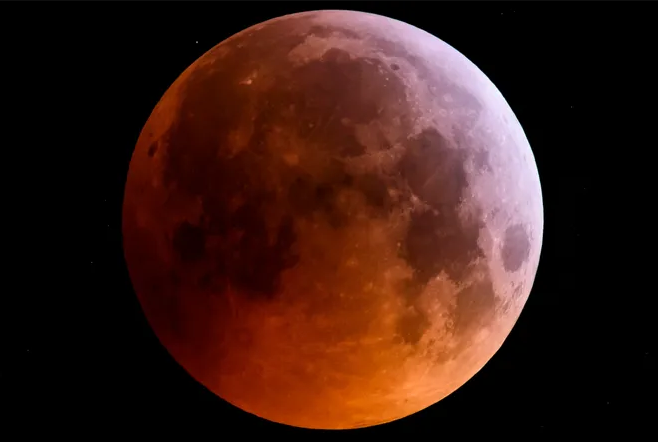1:45 PM | *Total lunar eclipse coming with the next full moon on the morning of Tuesday, November 8th (Election Day)*
Paul Dorian
Overview
Election Day on Tuesday, November 8th will not only come on a day with a full moon this year, but it’ll feature a total lunar eclipse visible across the country. This is actually the first Election Day total lunar eclipse in U.S. history and the next such occurrence won’t occur for 372 years according to earthsky.org. A total lunar eclipse takes place when the Earth comes between the sun and the moon and its shadow covers the lunar surface. Eclipse watchers can see the moon turn red when the eclipse reaches the totality phase.
Details
For a total eclipse to take place, the sun, earth and moon must be lined up so that earth blocks sunlight from reaching the surface of the moon. The moon is still visible to the naked eye because the earth’s atmosphere bends sunlight and indirectly light’s up the moon’s surface. When sunlight passes through the earth’s atmosphere, it gets refracted towards the earth’s surface and part of it – the colors with shorter wavelengths – gets scattered and filtered out while the rest, colors with longer wavelengths like orange and red, passes through the atmosphere. This light is once again refracted towards the surface of the moon, thus illuminating it in a reddish-orange glow which is why a total lunar eclipse is sometimes referred to as a “blood moon”.
A map showing where the November 8, 2022 lunar eclipse is visible. Contours mark the edge of the visibility region at eclipse contact times. The map is centered on 168°57'W, the sublunar longitude at mid-eclipse. Credit: NASA Goddard Space Flight Center/Scientific Visualization Studio
In the US, the lunar eclipse will be visible (weather permitting of course) in the wee hours of the morning before sunrise on Tuesday, November 8th. In Washington, D.C. and Philadelphia, PA, the early (penumbral) phase of the eclipse begins shortly after 3 am, the full (totality) phase begins around 5:16 am and ends around 6:41 am. The moon will set below the horizon just a few minutes after the totality phase ends in this area. This will be the last total lunar eclipse until March of 2025 though there will be partial and penumbral lunar eclipses during that time.
Meteorologist Paul Dorian
Arcfield
arcfieldweather.com



